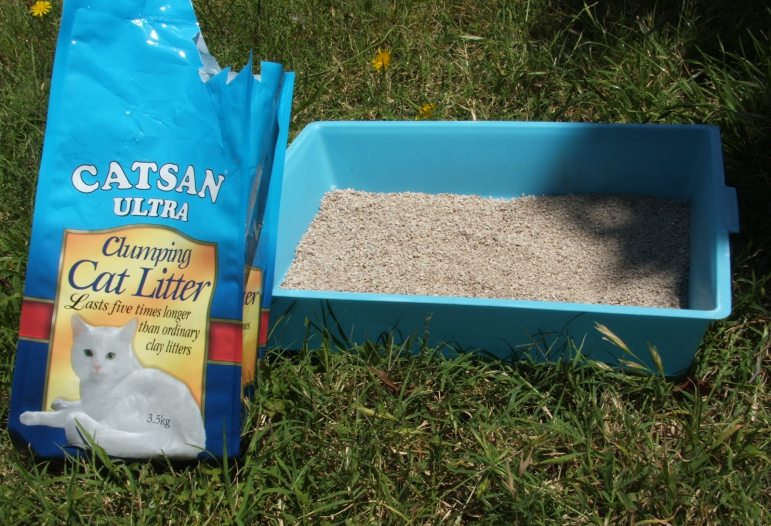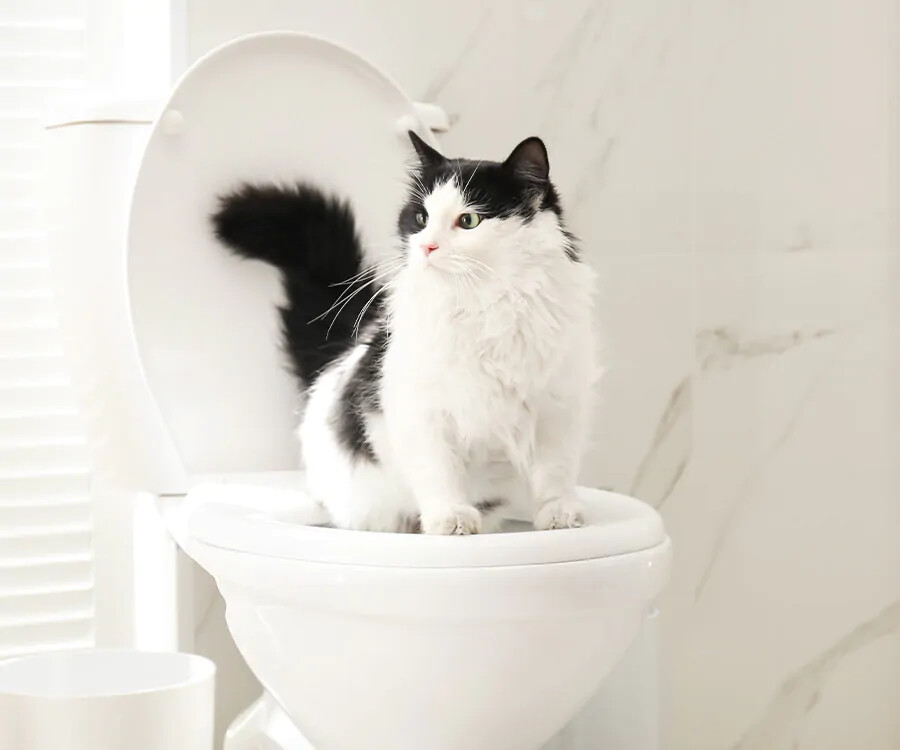Cats are one of the smartest creatures in the animal kingdom. And if you got a new cat, it becomes a necessity to potty train it. As a parent, you might be going amok on how to teach it. Nonetheless, it is so simple that everyone can do it. Here are different steps to potty train your cat.
Most of the kittens come into new homes with prior knowledge of using a litter box. Their strong instinct to bury the evidence after committing a deed also helps them out in the process.
Nonetheless, a new parent can follow these simple steps to embed good bathroom habits onto their cats.
Things You’ll Require
While potty training your kitty, a few supplies will come in handy:

- Litter boxes: Cats feel comfortable addressing nature’s call in a private place. So, you might want to place the litter box in an area that offers privacy and is easy to access. Whatsmore, having more boxes than the cats using it is a good idea.
- Kitty Litter: There are a lot of options in this aspect, from inexpensive non-clumping clay litter to high-end ones. Cats usually aren’t picky about the kind you use. Nonetheless, some find it very hard to get used to one if they don’t like its texture or smell. The best thing you can do is, to begin with a standard, unscented, clumping litter. You may try others after your kitty is properly trained
- Treats and toys: Proper use of positive reinforcement and rewards leads to efficient training of your cat. If you reward your kitty with a cat treat or some dry cat food each time, they use the litter box. However, you’ll have to gradually stop providing them with rewards.
Steps To Potty Train Your Cat
Here are some steps you can follow to litter train your kitten:
- The first thing you want to do is show your cat the box and let them sniff/examine it. However, it might cause confuse your kitten if you move the boxes-so avoid doing so.
- After allowing them to do their own investigation, you should set your cat in the litter box right after meals and naps. Kittens might look like they are sniffing or crouching in a particular area, which is a sign of wanting a bathroom break. As soon as you notice such behavior, you need to pick them up and put them in the litter box.
- Provide your cat with rewards, treats, or a toy whenever you find them using the box
- Avoid punishment or scolding for accidents. Doing so will smoothen the training, as cats don’t associate punishment with the incident.
Cleanliness and Maintenance
Many consider Cats the cleanest of all pets. Their passion for grooming and self-care are a few of the many reasons. Moreover, kittens don’t like feeling dirty and emitting foul smells.
So, it’s important to clean the litter box. You can hit two birds with one stone, as taking good care of the box helps to eliminate the cat smell from your home and makes it a pleasant experience for your kitten.
- Daily removal of your cat’s feces is a must. Likewise, you need to replace soiled litter after it stops suppressing odor.
- For cleaning and disinfecting the litter, you can use mild soap and water. But, avoid using bleach and commercial disinfectants as they could harm your cat.
- Similarly, the use of enzyme cleaner outside the box where your kitten had accidents eliminates the smell, which encourages them to go in that area.
Potty Train Older Cats
Usually, older kittens are already good at using a litter box. However, you might face some issues if it was previously an outdoor one.
Nevertheless, the cats’ instincts help them learn bathroom etiquette quite fast. To make such cats use litter is the biggest challenge.

Putting some outdoor soil in the litter box helps the kittens to get habitual. And as your cat gets comfortable, you can gradually replace the soil with cat litter.
What If Your Cat Doesn’t Comply?
Well, some cats can be picky about the contents of the litter box. In most cases, the problem is the size of the box, smell, or texture of the litter.
They may find it uncomfortable in a box with a covering. Other things, such as the litter box’s location, might contribute to your cat’s behavior.
Nonetheless, a little bit of experimenting with the right combinations can help solve your problems. Moreover, joint pain or stiffness causes older cats to have difficulty accessing the box.
You can check whether the sides are too tall for comfort. Likewise, stairs or something might help in such a situation.
Furthermore, kittens tend to urinate all over the house to mark their territory even after being potty trained. They don’t exhibit such behavior after being spayed or neutered.
Besides that, your cat can show inconsistency in using the litter box. It might use the box for a time before suddenly stopping. Usually, stress and anxiety are the culprits.
You can contact the veterinarian or check for any major environmental changes to solve the issue. Additionally, no longer use of the litter box might be a sign of health problems, including urinary tract infection.





